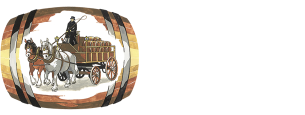The Living Cask
The Living Cask:
Rediscovering an ancient hobby
Keeping oak barrels at home filled with an assortment of alcoholic beverages is an ancient custom. Keeping the cask at least half full and replenishing it with “fresh stock” is called a Solera process.
A traditional solera system in a cellar would have a barrel stack ranging from the youngest at the top to the oldest at the bottom. A proportion of whisky (in Jerez it would sherry) is removed from the barrels in the bottom row for bottling. These are in turn topped up from the row above and so on. The very top row is topped up with the youngest whisky. In this way a very consistent product over many years can be produced. The bottom barrels will thus always contain a portion of the original whisky used in the solera. Nowadays barrels are stored side by side and the product is transferred with a pump.
Whisky, Brandy, Port, Sherry, Mead and also beer –especially Lambic, Stale old ale and Flanders red – lends itself well to this keeping method. For now I want to introduce you to Draymans Solera Whisky. For the last few years the living cask has been my new hobby at home and has now been transformed into a small whisky business. It is a perfectly legal hobby to “make” your own whisky at home – so long as “make” is defined as the blending of whiskies which you have bought from say Makro or any other liquor store and then maturing it in your own cask or casks. Obviously you can’t sell it either, unless you have an alcohol manufacturing license.
“Vatted Malt” means a blend (or vatting) of only single malt whiskies from various distilleries. The advent of vatting demonstrates an understanding of maturation and shows how the first commercial blenders were trying to impose quality and consistency in their products. Vatting was widely practiced in private homes. In 1864, Charles Tovey wrote of how, “in a gentleman’s cellar” one would find a hogshead (must have had a lot of friends!) containing four or five malts (whisky) which would be replenished with “any whisky that is particularly approved (of)” when the volume dropped below half. This solera method of vatting was expanded upon by Professor George Saintsbury in his Notes on a Cellar book (1920). The Professor’s cask contained Clynelish, The Glenlivet, Glen Grant, Talisker, and Islay. The idea has been revived by Richard Joynson at Loch Fyne, whose “Living Cask” has been evolving since 1988.
Vatted malts are more than just single malt blends without adding grain whisky, as practiced by the puristic portion of its followers. Vatted malts are about combining different levels of complexity to create different flavour combinations. For example, Glenfiddich Solera Reserve 15-year old is stored in huge Solera vats that, in common with those in Jerez are always kept at least half-full. This method of fractional blending not only gives consistency between bottlings but builds in extra layers of flavour – far more complex than conventional finishing.
Most Speyside whiskies have gradually dropped their peating levels in the past few decades and many are also noticeably lighter in style. The complex, almost oily character and the combination of floral notes, smoke and silky palate so valued by devotees of the old style, have largely disappeared. Bearing in mind that maturation accounts for 70% of the flavour of any whisky, you can now recreate a complex whisky at home with vatting.
If “Vatted Malt” implies using only single malt whisky, then perhaps “Solera Blend” would be an appropriate term to use where a mixture of both malt and grain whisky is used in a Solera cask. A “Solera Blend” is a more affordable approach to the hobby and allows the blender the freedom to use malt-whisky, grain-whisky and blends thereof to create his own unique flavours.
The pure indulgence and utmost pleasure of pouring your own dram of rich, golden, solera family reserve whisky directly from the cask can not easily be conveyed on paper. There are quite a few very good Irish, Scotch and Canadian whiskies locally available at around R80/bottle that can be valued contributors to your own Living Cask.
